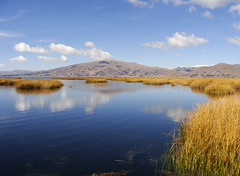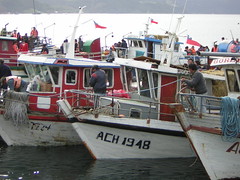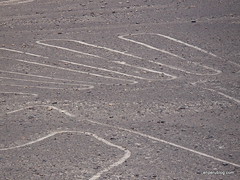The Sicán
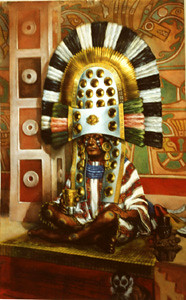 Not to be confused with the similarly named archaeological site of Sipán, the Sicán were an ancient civilisation that developed in northern Peru between 800 and 1300 AD. Also known as the Lambayeque culture, they were a people of metal workers and pyramid builders descended from the Moche, with trade connections and influence from peoples in the nearby mountains, rainforest and regions such as modern day Ecuador. Their trade system also gave them access to feathers from the Amazon to the east and lapis lazuli from Chile, far to the south.
Not to be confused with the similarly named archaeological site of Sipán, the Sicán were an ancient civilisation that developed in northern Peru between 800 and 1300 AD. Also known as the Lambayeque culture, they were a people of metal workers and pyramid builders descended from the Moche, with trade connections and influence from peoples in the nearby mountains, rainforest and regions such as modern day Ecuador. Their trade system also gave them access to feathers from the Amazon to the east and lapis lazuli from Chile, far to the south.
The Sicán constructed a gigantic city in the forests of Batán Grande in the Leche Valley, known as Poma, this city consisted of huge pyramids that rose above the trees. For reasons unknown to us, the Sicán burned this city to the ground, moving their entire civilisation some distance to Túcume which was conquered by the Chimú in 1350 AD.
Like their Moche ancestors, the people of Sicán used their pyramids for religious rituals and funerals of kings. There exist 34 pyramids in this valley.
They also built a complex irrigation system allowing the desert to be turned into an oasis. The Sicán rulers were buried in deep tombs next to the pyramids. In 1995 Japanese archaeologists Izumi Shimada excavated the Bosque de Pomac ruins discovering two of the richest tombs ever found in the Americas. They contained more than a ton of precious metal in the form of jewellery and ritual artifacts.
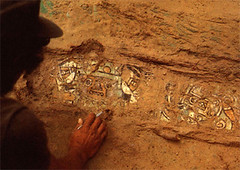 It was from the Sicán that the largest ever tumi ceremonial knife was discovered. Taken to Lima, it was stolen from a museum and almost certainly melted down.
It was from the Sicán that the largest ever tumi ceremonial knife was discovered. Taken to Lima, it was stolen from a museum and almost certainly melted down.
The remains of the two large Sicán cities can be found at Túcume and in the Bosque de Pomac at Batán Grande.
Tags: bosque de pomac, lambayeque, pyramids, sican, tucume, tumi



